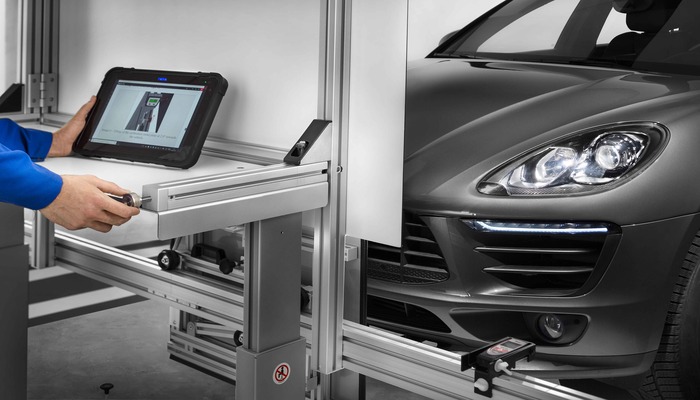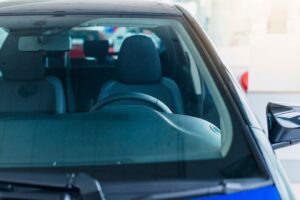Real-world examples of successful ADAS calibration underscore its vital role in road safety. Proper calibration ensures systems like Lane Departure Warning and Automatic Emergency Braking function correctly, preventing accidents and enhancing driver confidence. Accurate ADAS calibration is essential for maintaining vehicle safety features and promoting safer driving environments.
Real-World Examples of Successful ADAS Calibration
This section showcases real-world scenarios where ADAS calibration successfully addressed malfunctions and potentially prevented accidents. It highlights the importance of a properly functioning ADAS system for enhanced road safety.
Example 1: Lane Departure Warning Malfunction
Scenario: Imagine a driver is traveling on a highway. They notice the lane departure warning (LDW) system isn’t chiming as usual when they drift near the lane markers. This unexpected silence is concerning as the LDW system is a crucial safety feature, especially during long journeys.
Calibration Process: The driver takes their car to a certified technician equipped with ADAS calibration tools. The technician connects a diagnostic scanner to the vehicle and identifies a misalignment in the forward-facing camera used by the LDW system. Following the manufacturer’s instructions, they perform a static calibration using specialized targets. This process realigns the camera’s view with the road markings.
Positive Outcome: After calibration, the driver takes their car for a test drive. They’re relieved to hear the familiar chime of the LDW system as they intentionally veers slightly near the lane markers. The successful calibration ensures the LDW system remains functional, potentially preventing an accidental lane departure and a collision in the future.
Example 2: Automatic Emergency Braking Malfunction
Scenario: A driver is navigating stop-and-go traffic when the car in front brakes suddenly. However, the car’s automatic emergency braking (AEB) system, which typically applies the brakes automatically in such situations, doesn’t activate. This near-miss incident prompts the driver to get their AEB system checked.
Calibration Process: A technician inspects the car and discovers a malfunctioning radar sensor, a key component of the AEB system. The technician performs a calibration using specialized equipment. This process involves adjusting the radar sensor’s alignment and verifying its functionality with diagnostic tools.
Positive Outcome: Following calibration, the driver conducts a safe test drive in a controlled environment. They simulate a potential emergency situation, and this time, the AEB system reacts appropriately, applying the brakes automatically to avoid a collision. This successful calibration restores the driver’s confidence in the AEB system, ensuring it’s ready to intervene in real-world emergencies.

The Impact of ADAS Calibration on Road Safety
Proper ADAS calibration plays a critical role in enhancing road safety by contributing to several key factors:
Reduced Accidents
Functional ADAS systems act as a second pair of eyes for drivers, providing crucial warnings and interventions in critical situations. Improper calibration can render these systems unreliable, potentially leading to missed warnings or delayed reactions. Conversely, accurate calibration ensures ADAS features like automatic emergency braking (AEB) and lane departure warning (LDW) function optimally. This can directly prevent accidents by:
- Automatically applying brakes to avoid rear-end collisions (AEB).
- Alerting drivers to unintentional lane departures, giving them time to correct their course (LDW).
- Providing blind-spot warnings, preventing collisions when changing lanes.
By ensuring these features work as intended, ADAS calibration directly contributes to a reduction in accidents and keeps drivers and passengers safer.
Enhanced Driver Confidence
A well-functioning ADAS system fosters a sense of security and confidence behind the wheel. Drivers can rely on features like adaptive cruise control to maintain safe distances on highways, reducing fatigue and stress. Similarly, lane departure warnings and blind-spot monitoring systems provide additional assurance, allowing drivers to focus more on the overall driving experience. This improved confidence translates into more attentive and proactive driving behavior, further enhancing road safety.
Improved Overall Safety
The impact of ADAS calibration extends beyond individual features. By promoting safer driving habits and reducing reaction times in critical situations, it creates a safer environment for everyone on the road. Additionally, ADAS systems can be particularly beneficial for new drivers or those who may be less attentive due to fatigue or distractions. The combined effect of these factors contributes to a significant improvement in overall road safety.

Protect Your Safety, Get Regular ADAS Calibration
Schedule regular ADAS calibration following the manufacturer’s guidelines to ensure your vehicle’s safety features are functioning optimally. This is typically recommended after windshield replacements, certain repairs, or pre-defined intervals as specified in your car’s owner’s manual.
Speedy Windshield Repair: Your Trusted Partner for ADAS Calibration
We at Speedy Windshield Repair are committed to your safety on the road. That’s why we offer comprehensive ADAS calibration in San Diego, using the latest technologies and factory-trained technicians to ensure your car’s driver-assistance features are precisely aligned and performing as intended. Our services are convenient, reliable, and affordable, giving you peace of mind that your ADAS system is ready to protect you whenever you need it.
Final Thoughts:
Successful ADAS calibration in real-world scenarios highlights its critical role in road safety. Proper calibration ensures systems like Lane Departure Warning and Automatic Emergency Braking function correctly, preventing accidents and boosting driver confidence. Speedy Windshield Repair offers reliable, affordable ADAS calibration services, ensuring your vehicle’s safety features are always optimized for maximum protection. Regular calibration is essential for maintaining optimal performance.



